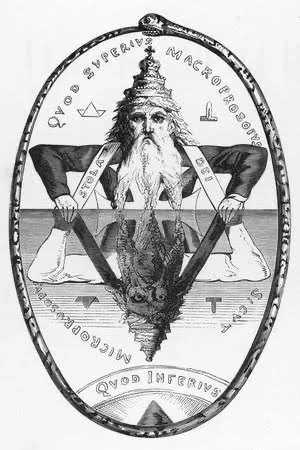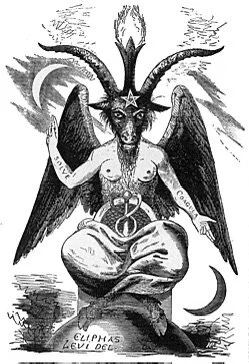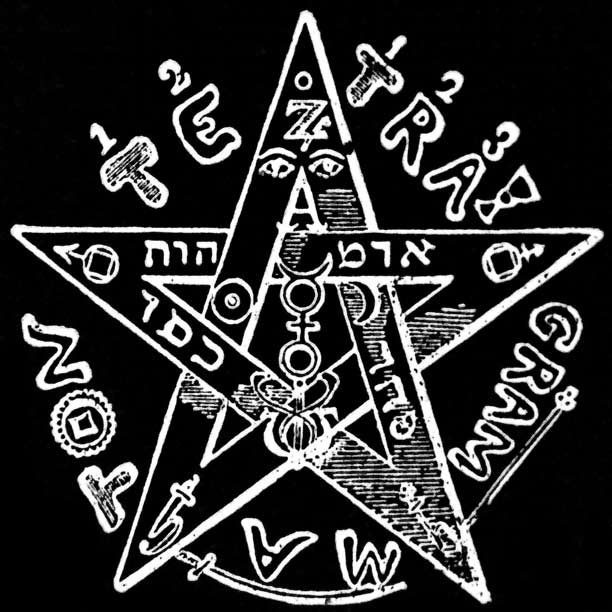The True Meaning of the Pentagram
According to Éliphas Levi (1856) – The Original Source Everyone Quotes But Rarely Reads
Researched and compiled from Éliphas Levi’s Dogme et Rituel de la Haute Magie (1854–1856). Shared strictly for historical study and inspiration. No practice or endorsement.
If you’ve ever seen a pentagram on a tarot card, a heavy-metal album, or a Wiccan altar, you owe it all to one man: Alphonse Louis Constant, better known by his magical name Éliphas Levi Zahed.
Before 1856, the five-pointed star was just a geometric curiosity or a simple folk protection charm. After Levi published the two volumes of The Doctrine of Transcendental Magic, the pentagram became the single most recognizable symbol of Western occultism. Almost every modern interpretation — upright = good, inverted = evil, circle = eternity — traces directly back to a handful of pages in his book.
Let’s go line-by-line through what Levi actually wrote (using the original 1856 French text and A.E. Waite’s classic 1896 English translation) so you can separate historical fact from 170 years of telephone-game mythology.
1. The Pentagram as the Sign of the Microcosm
Levi declares:
“The Pentagram, which in Gnostic schools is called the Blazing Star, is the sign of intellectual omnipotence and autocracy… With this sign upon his brow, man may walk unburnt in the furnace.”
Translation: the upright pentagram (one point at the top) is literally the human being in perfect form — head (spirit) ruling the four limbs (elements). It is the “Microcosm” — the little universe — because, for Levi, humanity contains the entire cosmos in miniature.
2. The Inverted Pentagram and the Sabbatic Goat
Here’s the passage that birthed every Satanic panic since the 1960s:
“When the horns are above and the single point below, it signifies the Fall… it is the goat of lust attacking the heavens with its horns… a sign of antagonism and fatal anarchy.”
Yes — Levi invented the “evil inverted pentagram.”
He later combined it with the goat head in his famous 1856 Baphomet illustration (the one on the Devil tarot card in the Rider-Waite deck). The inverted star + goat head = the symbol of matter dominating spirit, the descent into chaos, and the “infernal sabbath.”
3. The Circle: Eternity and the Astral Light
Levi is crystal clear that the circle is not optional:
“The circle surrounding the pentagram signifies the infinite… the pentagram within the circle is the sign of the Word made flesh in the midst of the four elements.”
In other words, the encircled pentagram is the magical formula for incarnation itself — spirit descending into matter and then re-ascending.
4. The Four Elemental Assignments (Levi’s exact mapping)
Most modern books get this slightly wrong. Here is Levi’s original placement inside the upright pentagram:
Top point → Spirit (the divine spark)
Upper-right → Air
Upper-left → Water
Lower-right → Fire
Lower-left → Earth
(Notice Fire is on the right, not the bottom-left like many 20th-century systems.)
5. Planetary & Kabbalistic Correspondences
Levi overlays the pentagram onto the Tree of Life and gives these attributions (rarely quoted in full):
Spirit point = Kether (the Crown)
The five points together = Geburah (Severity/Mars) when used actively
The encircled star = the Shekinah, the divine presence in matter
He also links it to the five letters of the Tetragrammaton plus Shin (YHVH + Sh = Yeheshuah, the Pentagrammaton).
6. Practical Use According to Levi
Levi claimed the pentagram could:
Command elementals (“the sylphs, undines, gnomes, and salamanders obey this sign”)
Banish or invoke spirits depending on direction traced
Act as the ultimate protective seal when drawn in the air or on the ground
7. Why the Misunderstandings Happened
Anton LaVey flipped Levi’s symbolism in 1966 and made the inverted goat-head official for modern Satanism.
Gerald Gardner and later Wicca reclaimed the upright pentagram and downplayed the inverted one.
Pop culture (horror movies, metal albums) ran with Levi’s “goat of lust” line and ignored everything else.
Sources & Further Reading
Éliphas Levi, Dogme et Rituel de la Haute Magie (1854–1856), Part I, Chapters V–VI
Trans. A.E. Waite, Transcendental Magic: Its Doctrine and Ritual (1896)
Save this to your digital grimoire, share it when someone says “the inverted pentagram was always Satanic,” and remember: the entire modern meaning of this symbol began with one French occultist in 1856.






Here are 22 magical and occult quotes from author Eliphas Levi, who was instrumental in the witchcraft that is practiced today.